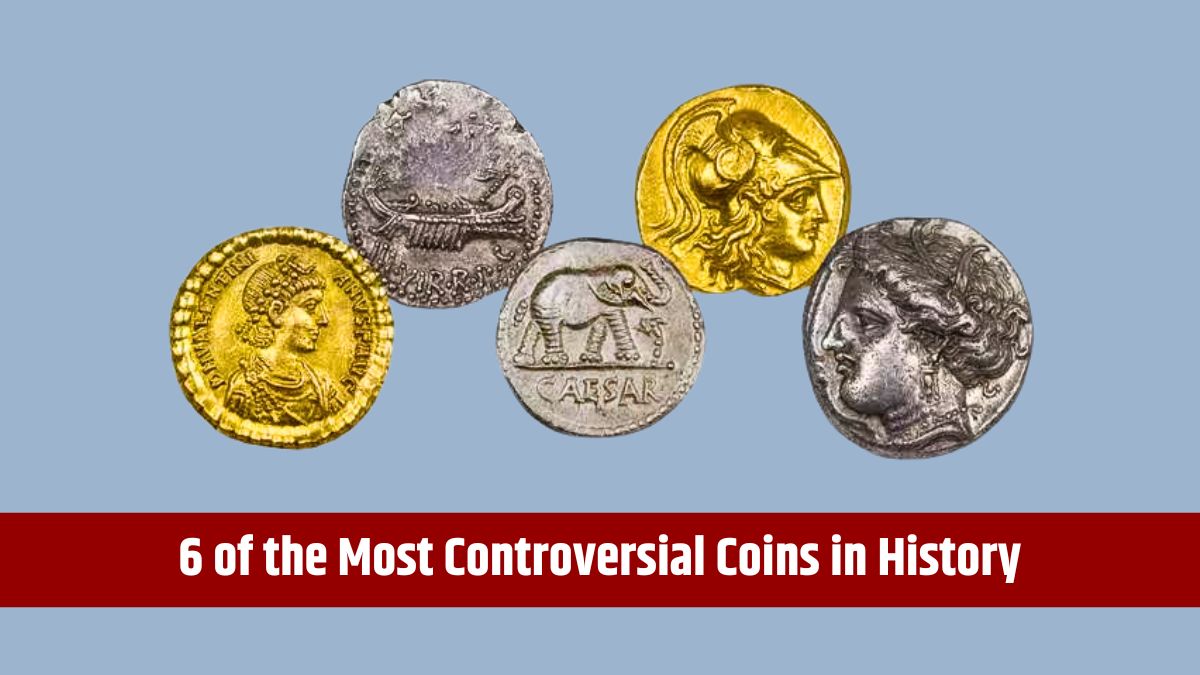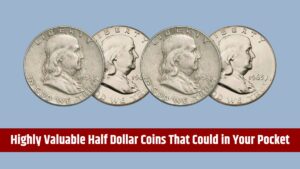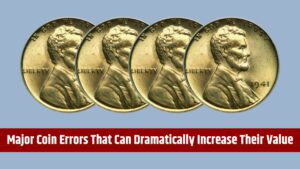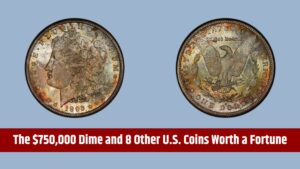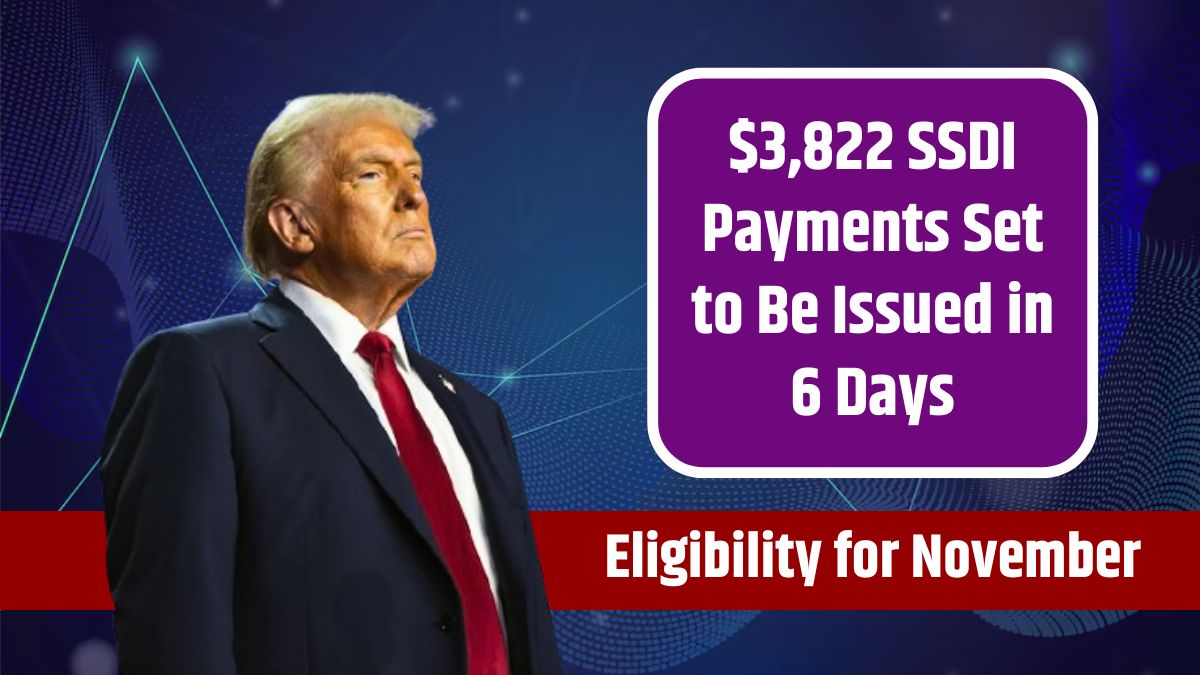Some of history’s most controversial coins hold both monetary and symbolic value due to the stories behind them. These coins, produced across different eras and regions, often spark debates about legality, morality, and the power of currency as a tool for influence. Here’s a look at six of the most contentious coins and the controversies that surround them.
1. “Saint-Gaudens” Double Eagle (1933)
Controversy: The 1933 Saint-Gaudens Double Eagle is among the most famous U.S. coins, not only for its design but also for the high-profile legal battles and theft associated with it. Designed by Augustus Saint-Gaudens, this gold coin features a striking image of Lady Liberty. But after President Franklin D. Roosevelt took the U.S. off the gold standard, owning gold coins became illegal, and the 1933 Double Eagles were meant to be melted down. A small number were stolen from the Mint, and many were recovered. However, one coin resurfaced in 2002, selling for $7.6 million despite ongoing debates about its rightful ownership.
Why It Matters: This coin symbolizes the tension between monetary policy, legal authority, and the black market. Its story raises questions about ownership and government control over currency, showing how coins can become entangled in national policy and public interest.
2. 1913 Liberty Head Nickel
Controversy: The 1913 Liberty Head Nickel was unauthorized and minted under mysterious circumstances after the Liberty Head design was replaced by the Buffalo Nickel in 1913. Only five of these nickels were struck, likely by a Mint employee without permission, and they remained unknown until years later. Despite its controversial origins, one of these coins sold for $3.7 million in 2003.
Why It Matters: The 1913 Liberty Head Nickel highlights the grey areas between official minting practices and the allure of rare collectibles. This coin serves as a reminder of the collector market’s obsession with anomalies and questions the limits of official control over coin production.
3. “Killer” Coins of Ancient Rome
Controversy: Roman Emperor Caligula’s reign was marked by violence, and his coins were no exception. Issued between 37 and 41 AD, some of Caligula’s coins depicted him as a god, using phrases like “Dominus et Deus” (Lord and God) to affirm his divine status. This deification shocked many Romans, and the coins themselves, with their images of power, were symbols of his brutal rule.
Why It Matters: The coins from Caligula’s reign illustrate how emperors used currency as propaganda. They serve as historical reminders of how rulers manipulated public perception to solidify control, and they highlight the dark sides of imperial power.
4. Nazi Reichsmark (1933–1945)
Controversy: The Nazi Reichsmark, minted during Adolf Hitler’s regime, is one of the most infamous coins in history. These coins featured swastikas and other symbols to support Nazi ideology. Many view collecting such currency as distasteful, while others see it as essential for historical remembrance. The controversy lies in whether such symbols should be preserved or rejected.
Why It Matters: The Reichsmark coins reflect how currency can propagate harmful ideologies, offering a powerful reminder of the consequences of totalitarianism. These coins continue to highlight ethical issues within historical preservation and collecting.
5. 1977 “No Mintmark” Lincoln Cent
Controversy: In 1977, a batch of Lincoln cents was minted without the usual mintmark, sparking confusion and fascination. This error led some to speculate whether these coins were intentional rarities. Though eventually identified as production errors, these “no mintmark” cents became valuable collector’s items, raising concerns about quality control at the U.S. Mint.
Why It Matters: The 1977 “No Mintmark” Lincoln Cent exemplifies how minor production errors can intrigue collectors and elevate a coin’s value. It also highlights the public’s fascination with rarity and errors and serves as a case study in quality control within the minting process.
6. Commemorative Half Dollar (1946)
Controversy: In 1946, the U.S. Mint issued a commemorative half dollar featuring Booker T. Washington. While intended to honor African American contributions, the coin faced criticism for oversimplifying Black history and failing to fully represent African American achievements. Although an early attempt at recognition, many viewed the coin as inadequate in addressing the complexity of African American contributions.
Why It Matters: The “African American” Commemorative Half Dollar highlights the challenges of creating meaningful commemorative coins. It raises questions about historical representation and the effectiveness of using coins to address complex social issues, pointing to the limitations of currency as a tool for recognition.
These six coins demonstrate how currency can serve as more than just a medium of exchange. From legal battles to symbols of authority, these coins reflect societal values, historical milestones, and the ethical considerations collectors face in preserving and valuing history.
FAQs
Why was the 1933 Double Eagle controversial?
It was minted then banned, and some were stolen, sparking legal battles.
How many 1913 Liberty Head Nickels exist?
Only five were struck, likely unauthorized.
What makes Caligula’s coins unique?
Caligula’s coins depicted him as a god, symbolizing his tyrannical rule.
Why are Nazi Reichsmark coins controversial?
They supported Nazi ideology, posing ethical questions for collectors.
What was controversial about the 1946 half dollar?
Critics felt it oversimplified African American contributions.

